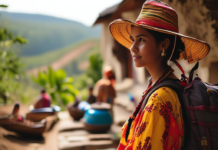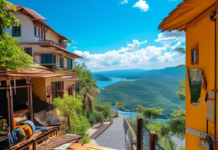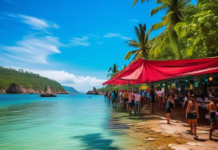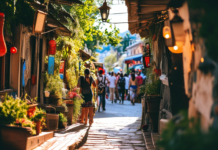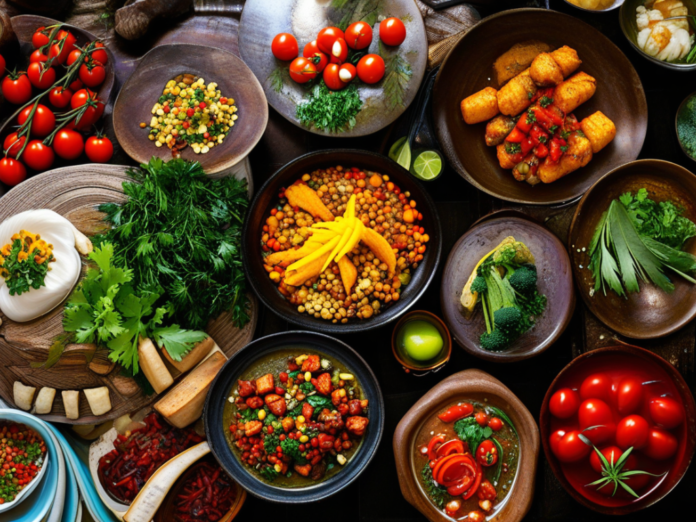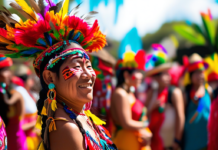Embark on a culinary odyssey through the vibrant and diverse flavors of South American cuisine, a treasure trove of tastes that reflect the continent’s rich cultural tapestry. From the spicy kick of Peruvian ceviche to the hearty embrace of Argentinean asado, South America offers a kaleidoscope of culinary delights waiting to be savored. Join me as we traverse the culinary landscapes of this enchanting continent, exploring the traditional dishes, local ingredients, and unique dining customs that make South American cuisine a feast for the senses.
In this article you will find:
- 1. Gastronomic Heritage: A Melting Pot of Influences
- 2. Culinary Delights: Must-Try Dishes and Drinks
- 3. Culinary Experiences: Markets, Street Food, and Fine Dining
- 4. Culinary Traditions: Rituals, Festivals, and Home Cooking
- 5. Culinary Insights: Sustainability, Farm-to-Table, and Indigenous Ingredients
- 6. Culinary Discoveries: Hidden Gems and Local Secrets
- 7. Culinary Legacy: Creating Memories and Inspiring Journeys
1. Gastronomic Heritage: A Melting Pot of Influences
South American cuisine is a reflection of the continent’s fascinating history, blending indigenous flavors with colonial influences to create a culinary mosaic unlike any other. In countries like Peru, the fusion of Inca, Spanish, African, and Asian culinary traditions has given rise to dishes like lomo saltado, a tantalizing stir-fry that marries tender beef with soy sauce and Peruvian chilies. Similarly, in Brazil, the influences of Portuguese, African, and indigenous cuisines converge in feijoada, a hearty black bean stew enriched with pork, sausage, and spices.
During my culinary exploration of South America, I had the pleasure of sampling empanadas in Chile, where the Spanish pastry meets indigenous fillings like pino, a savory mixture of ground beef, onions, raisins, and olives. The harmonious blend of flavors and textures showcased the intricate dance of influences that characterizes South American cuisine, offering a glimpse into the region’s culinary heritage.
2. Culinary Delights: Must-Try Dishes and Drinks
Each country in South America boasts a unique gastronomic identity, with signature dishes and drinks that capture the essence of its culture and landscape. In Argentina, a visit is incomplete without indulging in a sizzling parrillada, a mixed grill of succulent meats cooked to perfection on an open flame. The smoky aroma that wafts through the air as the meat sears on the grill is a sensory experience like no other.
My journey through Peru led me to discover the magical world of pisco, a grape brandy that forms the heart of the country’s iconic cocktail, the pisco sour. Sipping this tangy and refreshing drink against the backdrop of Machu Picchu’s majestic ruins was a moment of pure bliss, as I toasted to the flavors of Peru and the ingenuity of its bartenders.
3. Culinary Experiences: Markets, Street Food, and Fine Dining
Immersing yourself in South American cuisine goes beyond restaurant dining, encompassing vibrant markets, bustling street food stalls, and exquisite fine dining establishments. The Mercado Central in Santiago, Chile, is a mecca for seafood lovers, offering a dazzling array of fresh catches from the Pacific Ocean. I relished the opportunity to sample ceviche, a zesty seafood dish marinated in citrus juices and spiced with ají peppers, at a local stall nestled within the market’s lively corridors.
Exploring the streets of Buenos Aires, Argentina, I found myself drawn to the tempting aromas emanating from parrillas, traditional grill houses where locals gather to enjoy juicy steaks and choripán, a grilled chorizo sandwich served with tangy chimichurri sauce. The convivial atmosphere and hearty flavors made it clear why street food holds a special place in the hearts of Argentinians.
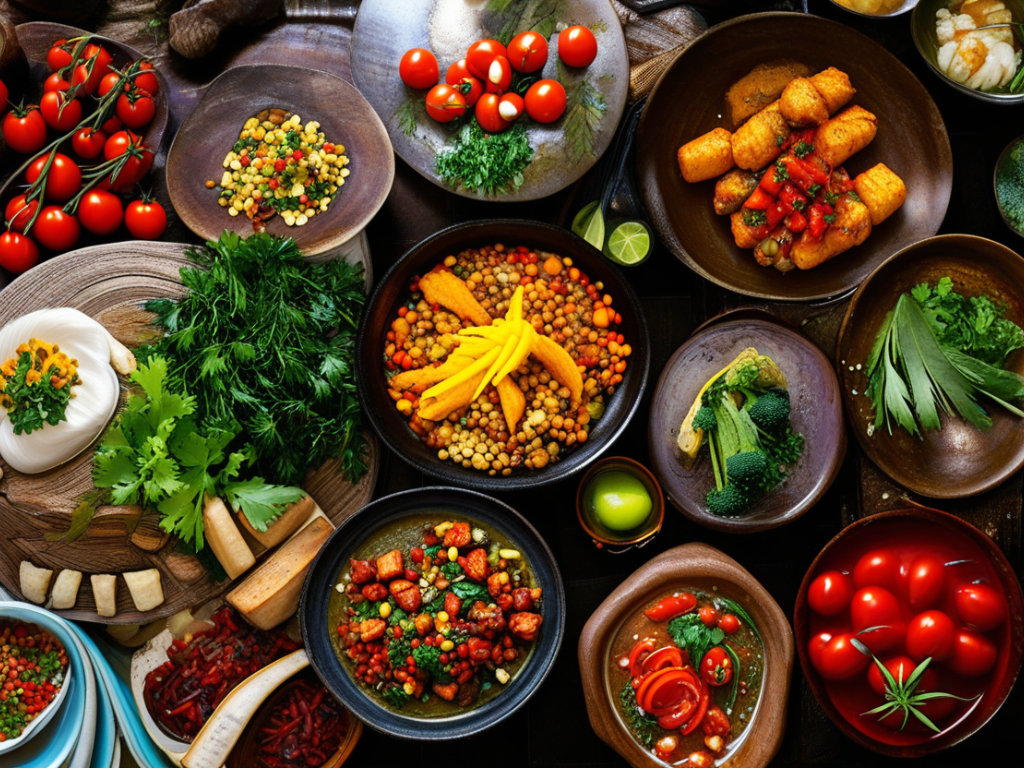
4. Culinary Traditions: Rituals, Festivals, and Home Cooking
In South America, food is intertwined with traditions, rituals, and celebrations that reflect the warmth and conviviality of its people. In Colombia, I had the privilege of partaking in a traditional arepa-making ceremony, where corn dough was skillfully shaped, grilled, and served alongside savory toppings like cheese, avocado, and chorizo. The act of preparing and sharing arepas with local families offered a glimpse into the communal spirit and culinary heritage of the country.
Diving into the culinary traditions of Ecuador, I joined in the vibrant festivities of the Inti Raymi festival, a celebration of the sun god that revolves around feasting, music, and dance. The elaborate dishes served during the festival, such as locro de papas, a creamy potato soup flavored with cheese and avocado, highlighted the importance of food in Ecuadorian culture and its role in fostering community bonds.
5. Culinary Insights: Sustainability, Farm-to-Table, and Indigenous Ingredients
As the world embraces sustainable dining practices, South American cuisine stands out for its emphasis on fresh, locally sourced ingredients and traditional farming methods. In Peru, the concept of farm-to-table dining is ingrained in the culture, with restaurants like Central in Lima showcasing indigenous ingredients sourced directly from local producers and foragers. Each dish tells a story of the land, the people, and the ecosystems that sustain Peru’s rich culinary heritage.
During my visit to Bolivia, I had the chance to taste quinoa, the ancient Andean superfood that has captivated the global culinary scene with its nutritional benefits and versatility. Sampling quinoa-based dishes like salteñas, savory pastries filled with a hearty mixture of quinoa, meat, and vegetables, illuminated the importance of indigenous ingredients in shaping the culinary identity of South America.
6. Culinary Discoveries: Hidden Gems and Local Secrets
Exploring the culinary landscape of South America unveils a treasure trove of hidden gems and local secrets that beckon to be discovered. In Uruguay, I stumbled upon a hidden courtyard cafe in Montevideo, where I was introduced to chivito, a delectable sandwich layered with steak, ham, cheese, and a fried egg. The unassuming charm of the cafe and the explosion of flavors in each bite left a lasting impression on my palate.
Venturing into the Amazon rainforest in Brazil, I encountered the culinary traditions of indigenous communities, where ingredients like açaí berries, hearts of palm, and pirarucu fish took center stage in traditional dishes. The delicate balance of flavors and the deep connection to the land showcased the profound respect for nature that underpins South America’s culinary heritage.
7. Culinary Legacy: Creating Memories and Inspiring Journeys
As you navigate the diverse tapestry of South American cuisine, let each dish, sip, and culinary encounter spark joy, curiosity, and a sense of adventure. From the bustling markets of Lima to the quaint cafes of Cusco, every bite tells a story of resilience, creativity, and cultural exchange that transcends borders and bridges nations. Embrace the unknown, savor the familiar, and let the flavors of South America linger on your palate long after you return home, a testament to the transformative power of travel and the enduring legacy of culinary exploration.


















